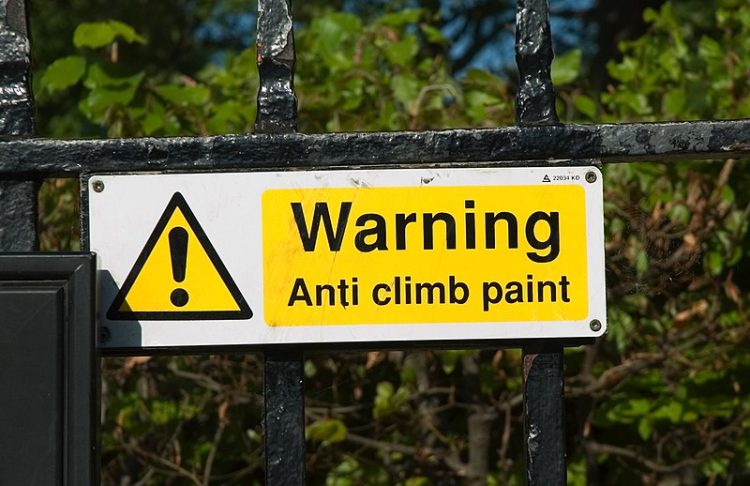As the name suggests, anti-climbing paint is a special type of security paint designed to deter criminals from trying to access a property. However, one can’t simply smear a fence with this stuff without legal consequences.
Anti-climbing paint is a non-drying coating that, once applied onto a surface, makes it virtually impossible for someone to climb that said surface. Once coated in anti-climbing paint, a surface remains slippery for a minimum of three years, retaining its protective properties in both hot and cold weather conditions. Anti-climbing paint is usually applied in thick 3mm layers and develops a glossy skin similar to that of regular paint, only beneath this skin, the paint is still wet, so once an intruder tries to climb a surface covered in it, the skin is breached and the wet coating makes scaling virtually any surface impossible.

Photo: Strom Carlson/Wikimedia Commons
Developed by Camrex Paints in the early 1960s, anti-climbing paint is still available from hardware and home supply stores around the world and advertised as an effective anti-intruder solution. And while it’s true that the paint works as intended in burglary or trespassing cases, it’s important to point out that it can also cause unintended material damage and serious injuries.
Because of the slippery nature of anti-climbing paint, whoever coats their property with this stuff is required to install signs warning of the use of the paint to absolve themselves of responsibility. In some jurisdictions, without these signs, a person could be liable for injuries from someone that gets hurt on their property, even if they were trespassing.
One of the advantages of anti-climbing paint, the fact that it sticks to anything it comes in contact with, making intruders easier to identify, can also be considered a drawback. If anyone accidentally comes in contact with anti-climbing paint, they can sue for damages, as this stuff is extremely difficult to remove from human skin, let alone most fabrics.
It is recommended that anti-climbing paint be used at heights above 1.8 meters, where the chances of passers-by coming in contact with it are very low. Typically, it is applied at 2.4 meters above the ground. However, this does nothing to prevent the paint from coming into contact with cats and various birds.
Special solvents are available to remove the paint, but otherwise, it is highly resistant to most chemicals used to remove conventional paints. Although paint companies advertise it as an effective anti-trespassing solution, the truth is that it is advisable to think carefully before applying anti-climbing paint, because it can land you in lawsuits.






